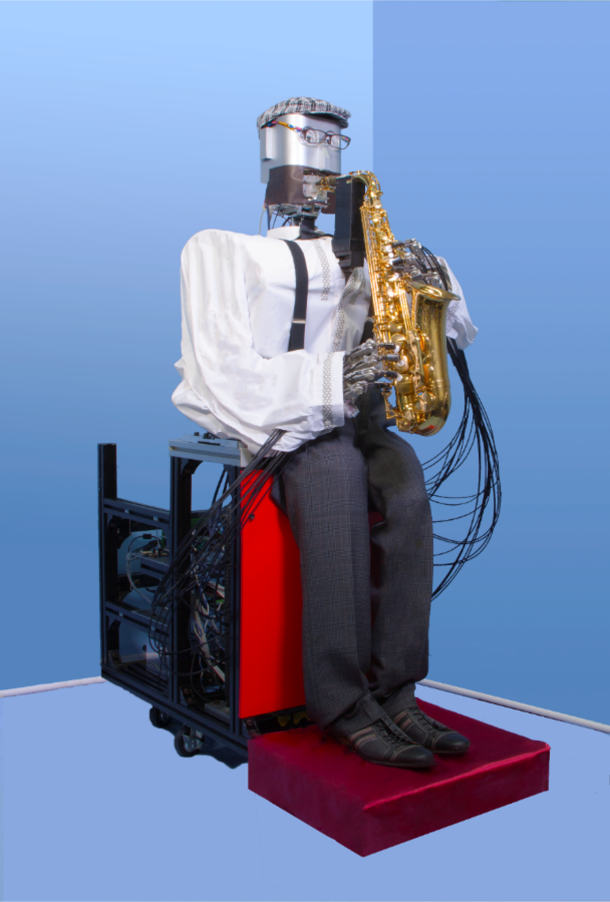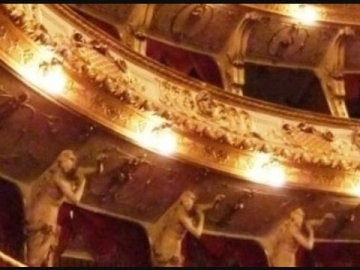Robots on Stage: The Past, Present, and Future of Technology at the Crossroads of Art and Engineering: Jia-Yeu LIN
Abstract

This presentation offers an overview of the historical development and future potential of robotic technologies in the performing arts. The term “robot” was first introduced in the 1920 play R.U.R. (Rossum’s Universal Robots) by Czech writer Karel Čapek, where the possibility of human-like beings intervening in labor and artistic domains was envisioned from the outset.
The origins of robotics, however, date back much earlier—to the automata of ancient Greece and Japan’s Edo-period karakuri dolls. These devices not only astonished and moved audiences but also served as important precursors to mechanical expressions of art. In the 20th century, Europe saw the rise of automatic musical dolls and stage mechanisms, while in Japan, technical innovations in Noh and Kabuki theatre fostered a fusion of artistry and engineering. These historical examples are now being reevaluated as the foundation for contemporary stage robots.
In recent years, the development of musical performance robots has advanced significantly, drawing attention to technologies that replicate or even extend human sensitivity and expressiveness. Of particular note is the series of musical robots developed at the Takanishi Laboratory, Department of Modern Mechanical Engineering, Waseda University. These robots possess performance capabilities comparable to those of human musicians and have been recognized both domestically and internationally. The presenter has been engaged in the development of humanoid saxophone-playing robots and conductor robots at the same laboratory, aiming to recreate the physical motion and musical intent of human performers.
Looking ahead, robots in the performing arts are expected to evolve beyond the role of mechanical performers. By integrating with AI and sensing technologies, they are poised to become “creative partners” who co-create stage productions alongside humans. This presentation explores the new possibilities and challenges of stage expression from a multidisciplinary perspective, situated at the intersection of art and robotics.
Event Outline
- Time and Date: July 12th (Sat.) 2025, 16:30 – 18:00 (JST)
- Format: HyFlex (On-Campus and Online meeting (Zoom))
- Venue: Waseda University, Waseda Campus, Room 406 of Building 3
- Presenter: Jia-Yeu LIN
- Affiliation: Faculty of Science and Engineering, Global Center for Science and Engineering
- Moderator: Michiko ISHII
- Language: Japanese
- Organized by: Waseda Institute for Research in Opera and Music Theatre (WIROM), Comprehensive Research Organization, Waseda University
Registration
Registration is required by July 11th (Fri.) for online participants.
Please register through the following URL:
https://list-waseda-jp.zoom.us/meeting/register/jG_tqZvGTsa7iiqgHGDuHg
*Please show your full name on the display, mute yourself, and turn off the video, except when talking; refrain from taking screenshots, recordings, etc., and follow the moderator’s instructions.
Contact
Waseda Institute for Research in Opera and Music Theatre (WIROM), Comprehensive Research Organization, Waseda University: https://prj-opera-mt.w.waseda.jp/
e-mail address: operaken-uketsuke[at]list.waseda.jp ([at] = @)
(This information will be sent later by Facebook and X (Twitter). You can see it there, too.)
Profile of Presenter
Jia-Yeu LIN
Robotics researcher and practical scholar working at the intersection of performing arts and engineering. Lecturer at the Global Center for Science and Engineering, Waseda University.Her areas of expertiseinclude humanoid robots, human-robot interaction (HRI), and the development and control of musical performance robots. Her research particularly focuses on designing art-assistive robots capable of replicating human body movements and musical expression.
Her major projects include the development of the Waseda Anthropomorphic Saxophonist Robot and Waseda Conductor Robot. In recent years, she has presented her work at international conferences and in academic journals, while also exploring the expressive potential of robots in the performing arts.



